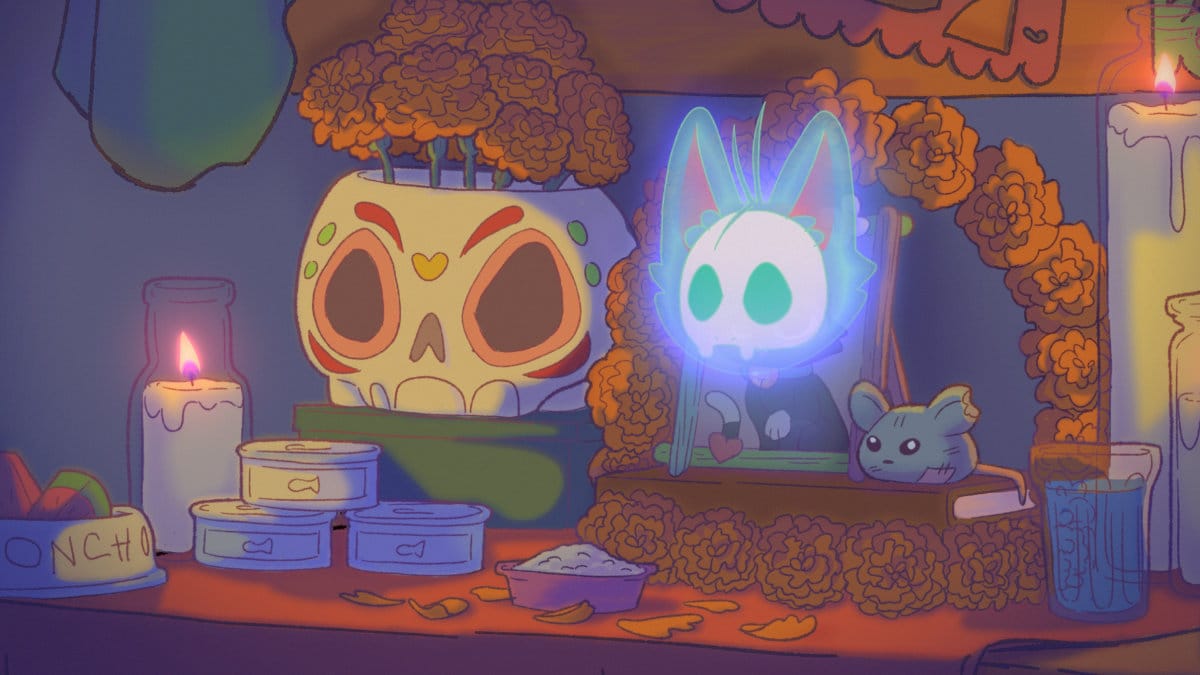
In Poncho, a young girl sets up a memorial for her cat who’s passed away. As she sleeps, her beloved cat returns as a spirit and they are reunited. From the planning and design to animation and compositing, every aspect of Poncho’s production was completed by Naomi Yanez.
Poncho is Naomi’s thesis film, the final assignment of the three year animation program at Cégep du Vieux Montréal. This animation program is one of the most accessible in Canada, and it covers every part of the animation production pipeline. We caught up with Naomi to learn about her experience in the animation program, the inspiration for her film, and the process of making Poncho.
How did your interest in animation begin, and what prompted you to join the animation program at Cégep du Vieux Montréal?
Naomi: I have always been fascinated by animated movies. When I was young I watched a lot of Disney movies with my mom and brother. I really enjoyed drawing, and I loved watching behind-the-scenes videos about animated movies. But I didn’t actually consider animation as a career until I went to visit Cégep du Vieux Montréal.
I hadn’t been considering a career in the arts. Actually, I was thinking about going into mechanical engineering, but since I loved drawing I decided to go into art.I considered FX makeup and Illustration. But it’s really when I visited the animation department at the Cégep that I knew right away that I had to do the program.

What has your experience in the program been like? Could you share one of the highlights of the program?
Naomi: To be honest, starting out my experience was hard. My first two applications to the program were declined. But I was very determined to join, and so I didn’t accept the two rejections. I drew every single day until my third application was accepted.
One of the highlights of the program for me has been the people I met. When the program gets too hard or draining, having classmates who can relate to and understand the challenges of it is very comforting.
It’s always a relief to just goof around while you work with awesome artists and friends. I genuinely believe my classmates aren’t just classmates, but friends and future coworkers. I can’t wait to work with them all in a professional setting.
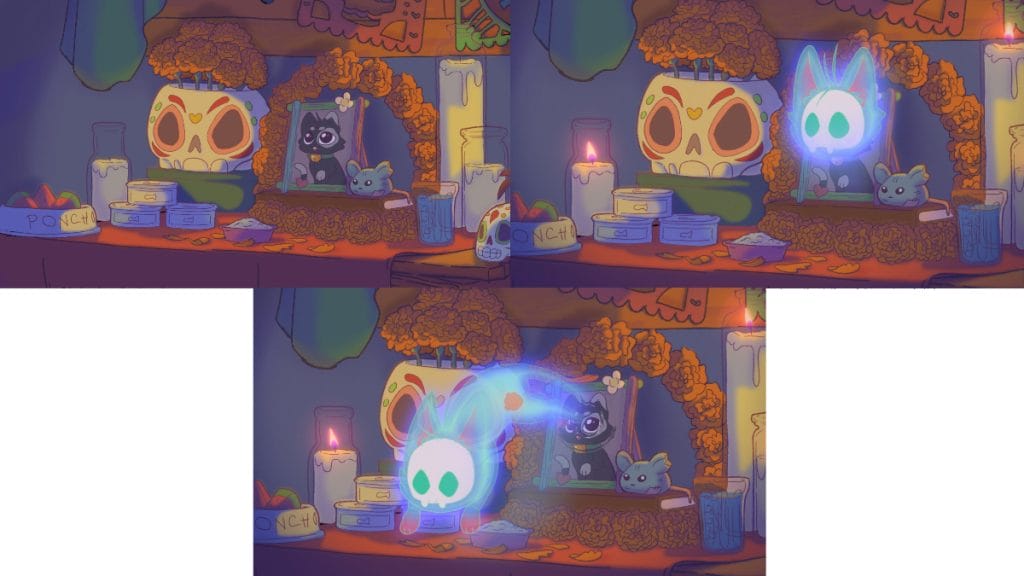
I noticed in the credits of the film, you thank Poncho, who lives in your mother’s memories. Can you share the story of Poncho, and what inspired you to make your film about this cat?
Naomi: Poncho was my mom’s cat. He was a stray cat she took in and took care of when she was living back in Mexico. When she became pregnant with me, she had to give Poncho away. But growing up, she always told me about him.
I chose to make my film about Poncho in honor of my mom. She’s a big role model for me so I felt that making the film about her beloved cat was a great way to dedicate the film to her, and to my Mexican heritage. My Mexican heritage is very important to me, and something I love to share.
What were the most exciting parts of the filmmaking process for Poncho?
Naomi: My favorite part of the process was working on the elements that help create the ambiance of the film. For example,I loved working with the coloring of my backgrounds, especially the VFX and compositing.
Poncho is packed with VFX, and it was an exciting learning curve for me to figure out how to do them in Harmony. Learning the VFX was very fun, kinda like figuring out a puzzle. Sometimes it was frustrating, and other times it was amusing.
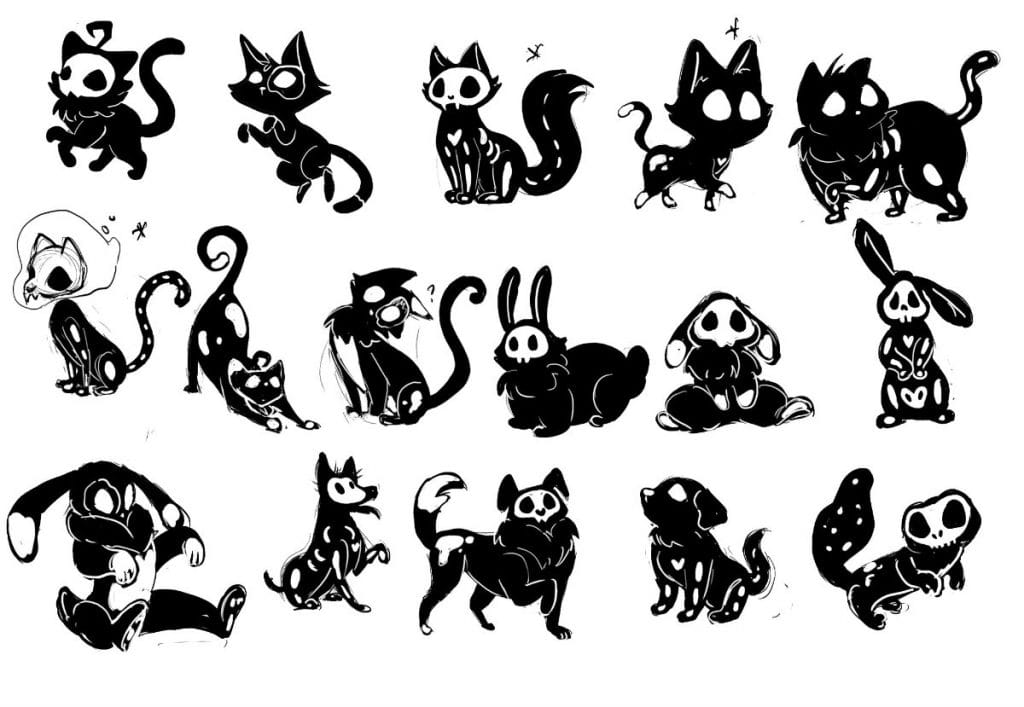
What was the most challenging part of making Poncho, and how did you overcome that challenge?
Naomi: Honestly, storyboarding was the toughest part for me. It was a challenge because we had to stick to a 30 second mark for our film. I wanted to show so much in my film, I found it difficult to narrow the story down to something that would fit within 30 seconds.
In my first storyboard, Luz, the little girl, was the main character instead of Poncho. You see her put together the little offering table. It took a lot of back and forth and trying a bit of everything for me to figure out a way to trim the story down in a way that respected the parameters of our student film assignment.
What was your character design process for Poncho?
Naomi: My film takes place on the Day of the Dead, which is a holiday in Mexico dedicated to honoring family members and friends who have passed away. I wanted to portray Poncho as a ghost cat, so I started with sketching a bunch of ghostly cats.
I don’t have pictures of the real Poncho, but my mom described him as a tuxedo cat – which is why his little paws and tail in his ghost form are a different color.
One thing I really wanted for his design was for him to really glow! I don’t know what it is but I love adding a glow effect to everything and I am so happy I was able to pump that to the max with Poncho’s design.
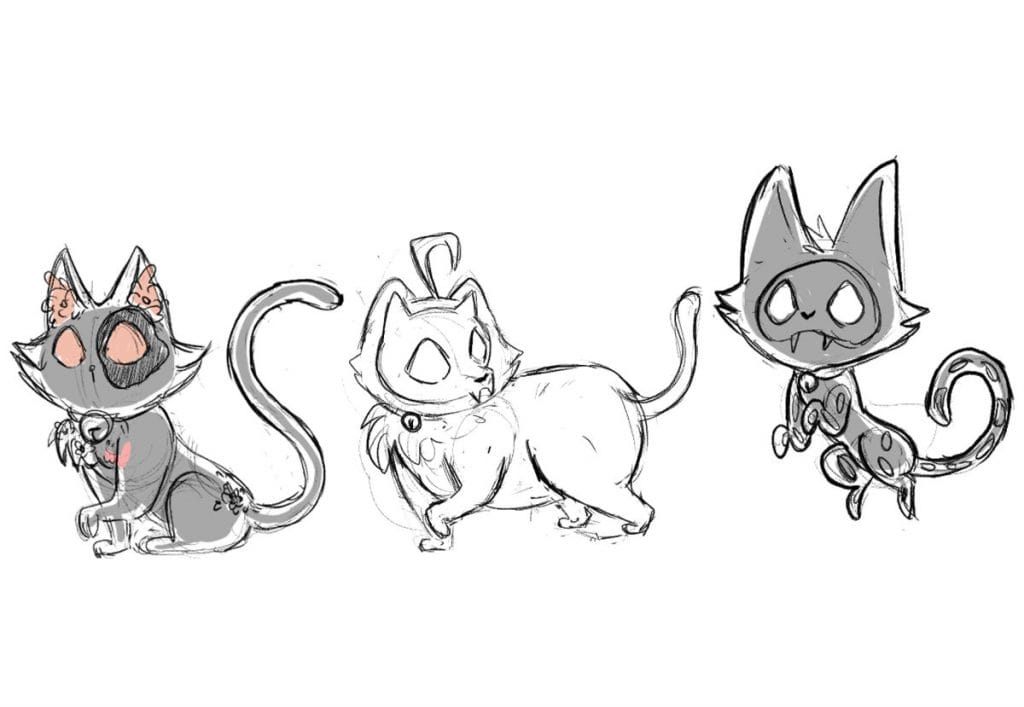
What was your favourite or most helpful feature in using Harmony to make Poncho?
Naomi: My favorite was probably the node view and all the nodes. This feature made it very easy to manage all my effects. The guides for perspective are a blessing, they helped a ton for my backgrounds. In general, I find Harmony really useful when you work in animation, it has pretty much everything. You can do a movie from start to finish with it, which is amazing.
Do you have any advice for up and coming animators that are working on their student films?
Naomi: I recommend being as organized as you possibly can be. Create a schedule for yourself that carves out work time and free time. This will make a huge difference in your work speed, and it also helps you to not feel too overwhelmed and stressed.
Other than that, I’d say it’s important to remind yourself to always keep going. Sometimes it feels like the end is so far away, it can be really demotivating. But the results are very worth it. Don’t give up!
What’s next for you in animation? Do you have upcoming goals or projects you’d like to share?
Naomi: Honestly, I don’t know! I want to jump into work right away and start gaining that experience, but as many people know, the industry is having a hard time right now. In the meantime, I want to work on some personal projects, as well as projects with some of my classmates.
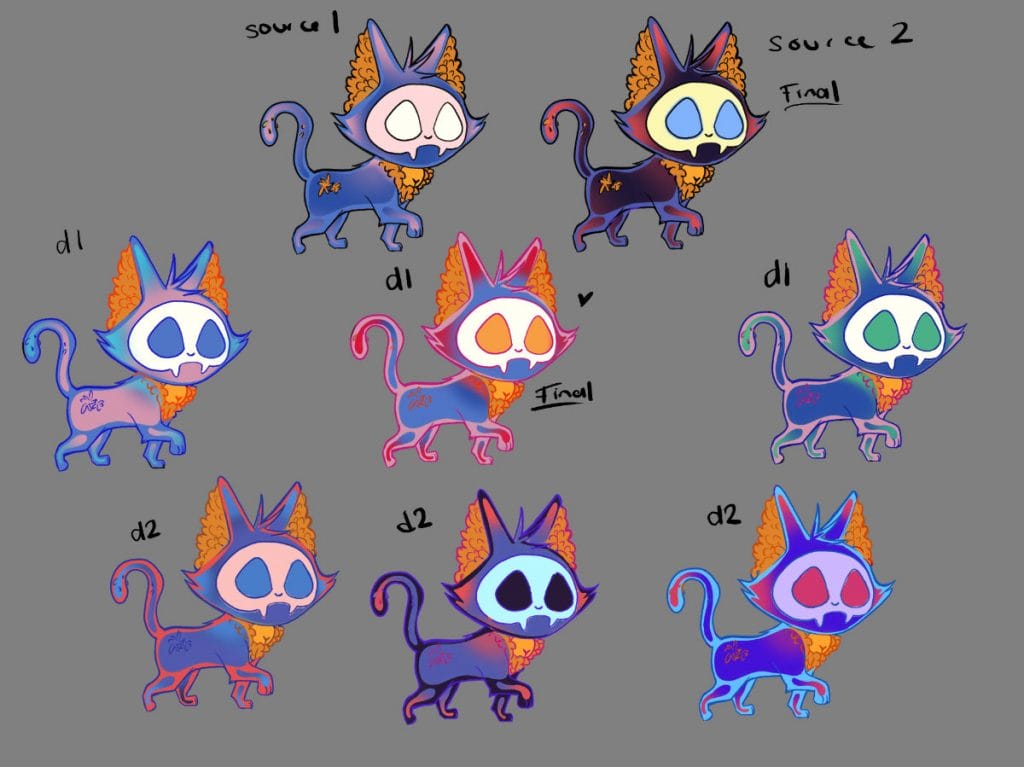
- Want to see more from Naomi Yanez? You can follow Naomi on LinkedIn.
- Interested in using Harmony for your thesis film? Students can qualify for up to 84% off Toon Boom Animation’s software.
